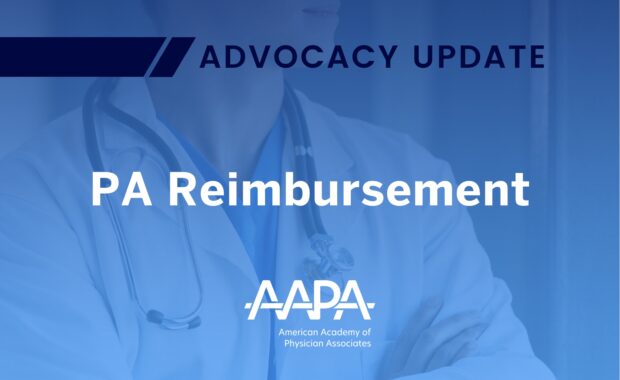Release of PA Licensure Compact Model Legislation Critical Step Toward Advancing PA Profession Interstate Practice Mobility
AAPA, FSMB, NCCPA, and CSG To Work with Target States for Early Adoption
November 21, 2022
After more than three years of working with the Federation of State Medical Boards (FSMB), National Commission on Certification of Physician Assistants (NCCPA), and the Council of State Governments (CSG) as well as numerous PA regulators and CO leaders, AAPA is excited to announce the release of the PA Licensure Compact model legislation.
Finalizing the model legislation is the first major step toward achieving widespread adoption of the PA Licensure Compact. In many ways, the work is just beginning. In order for the PA Licensure Compact to activate, seven states must pass bills containing the model legislation language. Once seven states do so a commission will be established to set up essential processes and administer the new compact.
What Is an Interstate Licensure Compact?
An interstate licensure compact is an agreement between states that establishes reciprocal professional licensing practices.
The goal is to make it easier for licensed professionals to practice across state lines while ensuring safety and quality of services. These agreements have gained traction in recent years as a way to improve licensed professionals’ ability to work in multiple states, including through telehealth.
Numerous other healthcare professions have active interstate licensure compacts, making this a familiar concept to state policymakers and regulators.
What Would the PA Licensure Compact Do?
The PA Compact will enable licensed PAs to practice in all states that join the compact, rather than getting an individual license in every state in which they want to practice.
The model legislation will allow for states who change the title of the profession to join the compact.
To qualify, the PA would be required to meet certain criteria, including, but not limited to, graduation from an accredited PA program, current NCCPA certification, as well as no felony or misdemeanor convictions or controlled substance restrictions.
How Was the PA Licensure Compact Model Legislation Developed?
Work on the PA Licensure Compact was initiated in November 2019 with a meeting in Washington, DC, bringing together representatives from state medical, osteopathic and PA boards and other stakeholders to identify the elements of a potential compact to facilitate PA license portability.
The COVID-19 pandemic forced the cancellation of a planned in-person stakeholder meeting in Spring 2020, but an additional in-person meeting was held in November 2021. In addition to these in-person meetings, a drafting committee comprised of members of these same groups developed legislative language, with legal and technical assistance provided by CSG.
[Stay up to date on legislative information that impacts you – join or renew today]
What Must Happen for the PA Licensure Compact to Take Effect?
Compacts are joined through a state’s legislative process, with each state adopting virtually identical statutory language. For the PA compact to become effective, seven states must adopt the model legislation, at which point a commission will be established to set up and administer the compact.
AAPA, FSMB, NCCPA, and CSG have identified initial target states for early adoption of the PA Licensure Compact model legislation. In addition, we encourage state chapters interested in pursuing compact legislation in the 2023 legislative session to contact [email protected] as soon as possible. AAPA looks forward to working with COs on its full adoption and implementation.
Where Can PAs Learn More?
The PA Licensure Compact model legislation and other compact resources may be accessed at pacompact.org.
You may also reach out to [email protected] with additional questions.
You May Also Like
What PAs Should Know About the 2023 Physician Fee Schedule Rule
Final Push for Federal PA Priorities Underway as Clock Ticks on 117th Congress
What Barriers Stand Between PAs and Rural Settings, MUAs, and HPSAs?
